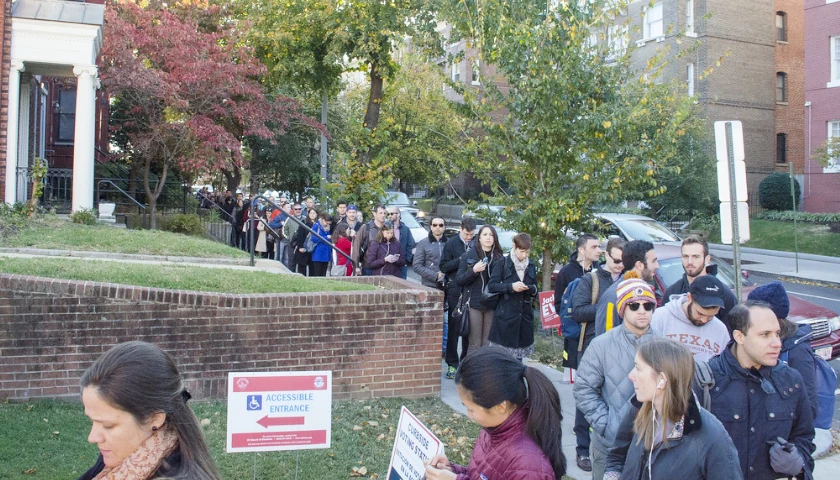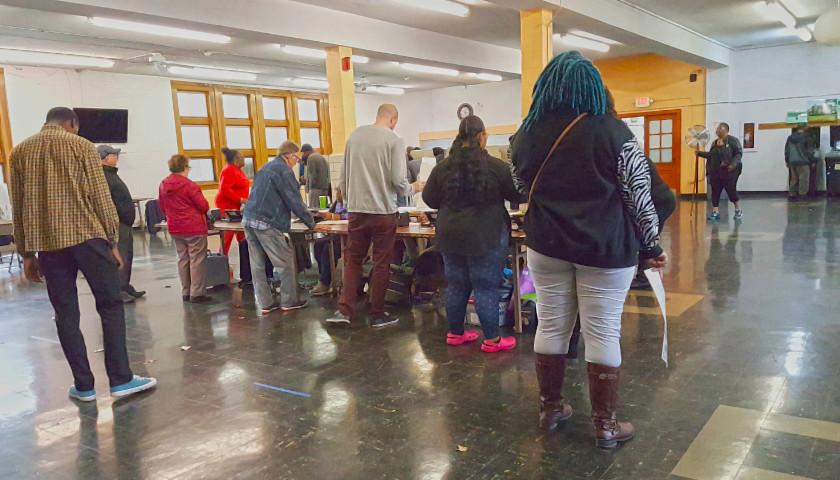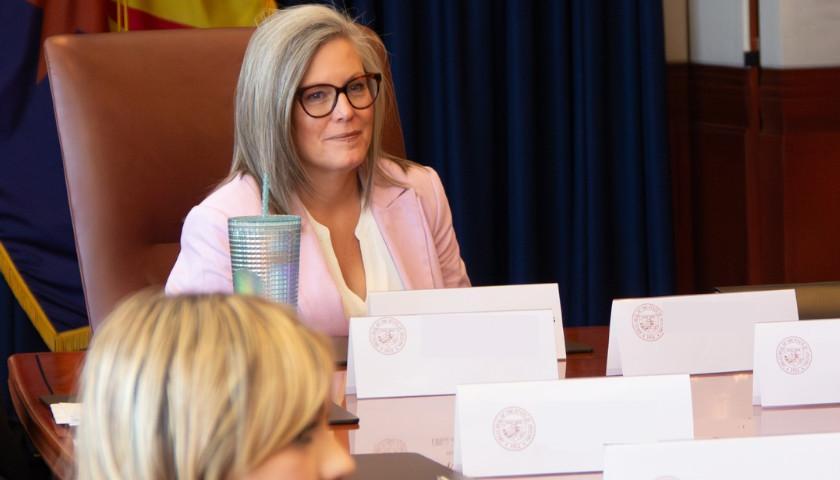The Arizona Democratic Party submitted a complaint on Monday to Arizona Attorney General Mark Brnovich, asking him to investigate whether a couple of members of the Arizona Independent Redistricting Commission (IRC) violated the Arizona Constitution by drawing district boundary lines to protect at least three incumbent Republican state senators. Executive Director Charlie Fisher, who signed the letter, also asked the attorney general’s office (AGO)to determine if the members violated Arizona’s Open Meeting law, and whether members, as well as senators and their staff, improperly used state resources and funds.
The moves may have been done to include significant Republican enclaves in heavily Republican districts, not to just grab a single senator’s residence. State Senator Vince Leach (R-Tucson), one of the senators who was accused of being gerrymandered into a heavily Republican district, explained to The Arizona Sun Times about the area he lives in that was included, “Catalina has always been in LD 11. Since the election of 2012.”
Fisher said that an early proposed map of the redistricting in October 2021 placed State Senator Wendy Rogers (R-Flagstaff) in Legislative District (LD) 6, an overwhelmingly Democratic district, but the final legislative map was adjusted so she was in LD 7, an overwhelmingly Republican district. Similarly, Fisher said State Senator Sine Kerr (R-Buckeye) was initially going to be placed in heavily Democratic LD 22 but ended up in LD 25. And finally, Leach was slated to be in a very competitive district, LD 16, but ended up in overwhelmingly Republican LD 17.
The Arizona Constitution states in part regarding redistricting in art. IV, pt. 2, § 1(14)( F)(15), “The places of residence of incumbents or candidates shall not be identified or considered.”
Fisher cited reporting from local journalist Jeremy Duda, who said Commissioner Shereen Lerner told Commissioner David Mehl that she would agree to a change to the LD 6 and LD 7 with one exception: “Don’t tell me it’s for an incumbent.” Mehl responded, “I won’t tell you.” Mehl then apparently discussed it with Lerner during a break, which Fisher alleges violated the Open Meeting Law.
Mehl told reporters the changes were made in order to help Democrats boost Navajo voting strength in LD 6. Lerner later opposed the final map due to believing it was made to protect Rogers.
Fisher accused Mehl of hiding correspondence he received from someone that prompted him to change the boundaries of LD 23 and LD 25, placing Kerr’s home in LD 25. Mehl and Commissioner Doug York explained on December 17 that they’d received numerous calls requesting that the community of Liberty, where Kerr lives, be placed in LD 25.
As for the redistricting affecting Leach’s residence, Fisher said Mehl claimed the tweak to the map putting Leach’s home in LD 17 — and an entire area known as Saddlebrook, located in the Catalina Foothills — was from a map submitted by the Southern Arizona Leadership Council (SALC), but that organization denied it. Instead, it “was created by a Republican political consultant and Vice-Chair and member of the Executive Committee of Arizona LD 11 Republican Party, Senator Leach’s current LD.” Fisher also accused Mehl of carving out LD 17 to include his own businesses.
Ted Maxwell, SALC’s executive director, admitted the organization wanted that change, however, in order to ensure there would be GOP lawmakers from Southern Arizona to promote issues in the Republican-controlled legislature. Commissioner Erika Neuberg, a registered independent who chairs the IRC, appeared to bolster this as well, saying at the time that she went along with the two GOP commissioners because she wanted to create a safe Republican district for largely Democratic Pima County.
Fisher accused Mehl of incorrectly claiming he had a letter of support from the mayor of Marana and other public officials. The letter came from Leach and was drafted by the Arizona Senate’s Majority Deputy Chief of Staff Grant Hanna at Leach’s direction. Fisher wants the AGO to determine whether Leach and his staffers conducted this activity using government resources. However, Leach said he has a legal opinion from legislative lawyers that says he is entitled to try to influence the redistricting process.
Even if Mehl and York suspected the changes would benefit incumbents, it may not be a violation of law, Duda, who has covered the IRC extensively, tweeted. A court has never ruled on the issue. Other groups submit maps that may protect incumbents, such as the Arizona Latino Coalition for Fair Redistricting. So if Mehl and York have committed violations, others could be implicated as well.
If the AGO finds that the IRC has violated the law, it is too late to redraw the districts before the fall elections. The Arizona Democratic Party could have filed the complaint four months earlier, but failed to.
What's particularly unclear here is why @azdemparty waited until now to file a complaint they could've filed 4 months ago. Even if the AG finds a violation, there's no way to redraw any districts in time for the 2022 primary. It's too late to do anything for this year.
— Jeremy Duda (@jeremyduda) April 11, 2022
Duda said he suspects the complaint won’t go very far. “It’s noteworthy that the @azdemparty isn’t actually suing over this, only filing a complaint with the AG,” he tweeted. “If they thought they had a strong case, I have to imagine they’d actually be going to court, and that they wouldn’t have waited until it was too late to change the new LDs.”
An elected official who watches the IRC closely and prefers not to be named, told The Arizona Sun Times, that if anything, the shaping of the districts is harmful to Republican senators. Some of them now must run against each other or reconsider their options, such as what happened with Rogers, who must now run against State Representative Kelly Townsend (R-Apache Junction).
He believes some of it might have been done deliberately to weed out certain types of loud, populist Republicans who the establishment doesn’t like. He believes similar things were done at the congressional level; for example, moving a significant amount of west Maricopa County into the district Representative Paul Gosar (R-04-AZ) is in, to sway it back toward Democrats.
The IRC was created out of a ballot initiative in 2000, taking the power away from the Arizona Legislature to redistrict. The switch has resulted in transferring many congressional and legislative seats from Republicans to Democrats, including flipping the congressional delegation from majority Republican to majority Democrat.
– – –
Rachel Alexander is a reporter at The Arizona Sun Times and The Star News Network. Follow Rachel on Twitter. Email tips to [email protected].
Background Photo “Arizona Capitol” by Gage Skidmore. CC BY-SA 2.0.





